Siyenaart
On this page, you find all documents, package deals, and flashcards offered by seller siyenaart.
- 23
- 0
- 1
Community
- Followers
- Following
24 items
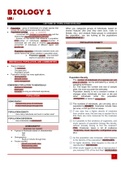
Population Ecology Lecture Notes
Biological populations evolve through genetic changes that correspond to changes in the organisms' observable traits.
- Book
- Class notes
- • 4 pages •
Biological populations evolve through genetic changes that correspond to changes in the organisms' observable traits.
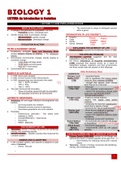
Introduction to evolution lecture notes
Evolution is the process of change in all forms of life over generations, and evolutionary biology is the study of how evolution occurs. Biological populations evolve through genetic changes that correspond to changes in the organisms' observable traits.
- Book
- Class notes
- • 3 pages •
Evolution is the process of change in all forms of life over generations, and evolutionary biology is the study of how evolution occurs. Biological populations evolve through genetic changes that correspond to changes in the organisms' observable traits.
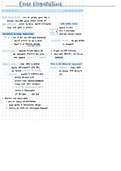
Gene Regulation Lecture Notes
Gene regulation is the process of controlling which genes in a cell's DNA are expressed (used to make a functional product such as a protein)
- Book
- Class notes
- • 3 pages •
Gene regulation is the process of controlling which genes in a cell's DNA are expressed (used to make a functional product such as a protein)
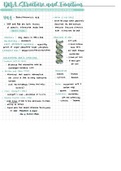
DNA structure lecture notes
The DNA molecule consists of 4 nitrogen bases, namely adenine (A), thymine (T), cytosine (C) and Guanine (G), which ultimately form the structure of a nucleotide. The A and G are purines, and the C and T are pyrimidines. The two strands of DNA run in opposite directions.
- Book
- Class notes
- • 5 pages •
The DNA molecule consists of 4 nitrogen bases, namely adenine (A), thymine (T), cytosine (C) and Guanine (G), which ultimately form the structure of a nucleotide. The A and G are purines, and the C and T are pyrimidines. The two strands of DNA run in opposite directions.
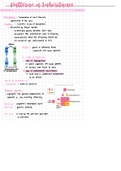
Patterns of inheritance lecture notes
Patterns of inheritance in humans include autosomal dominance and recessiveness, X-linked dominance and recessiveness, incomplete dominance, codominance, and lethality. A change in the nucleotide sequence of DNA, which may or may not manifest in a phenotype, is called a mutation
- Book
- Class notes
- • 4 pages •
Patterns of inheritance in humans include autosomal dominance and recessiveness, X-linked dominance and recessiveness, incomplete dominance, codominance, and lethality. A change in the nucleotide sequence of DNA, which may or may not manifest in a phenotype, is called a mutation
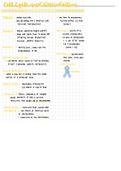
Cell Cycle and Reproduction Lecture Notes
The cell cycle (cell-division cycle), is a series of events that take place in a cell leading to its division and duplication. The main phases of the cell cycle are interphase, nuclear division, and cytokinesis. Cell division produces two daughter cells.
- Book
- Class notes
- • 7 pages •
The cell cycle (cell-division cycle), is a series of events that take place in a cell leading to its division and duplication. The main phases of the cell cycle are interphase, nuclear division, and cytokinesis. Cell division produces two daughter cells.

Book and Movie Review Walk to Remember
This movie story would give the movie audience a different kind of love story that will shift the viewpoint of love for the guy. A Walk to Remember gives the viewer a sense of love story instead of making a prince and a princess who can't meet because of their stepmother and stepmother; instead, this film tells the audience of an innocent girl whose love makes a little boy into a gentleman. A big reason that this movie was a vacation from other movies was that this movie was one of the first mo...
- Book
- Book review
- • 2 pages •
This movie story would give the movie audience a different kind of love story that will shift the viewpoint of love for the guy. A Walk to Remember gives the viewer a sense of love story instead of making a prince and a princess who can't meet because of their stepmother and stepmother; instead, this film tells the audience of an innocent girl whose love makes a little boy into a gentleman. A big reason that this movie was a vacation from other movies was that this movie was one of the first mo...

Photosynthesis and Respiration lecture notes
Photosynthesis converts carbon dioxide and water into oxygen and glucose. Glucose is used as food by the plant and oxygen is a by-product. Cellular respiration converts oxygen and glucose into water and carbon dioxide. Water and carbon dioxide are by- products and ATP is energy that is transformed from the process.
- Book
- Class notes
- • 5 pages •
Photosynthesis converts carbon dioxide and water into oxygen and glucose. Glucose is used as food by the plant and oxygen is a by-product. Cellular respiration converts oxygen and glucose into water and carbon dioxide. Water and carbon dioxide are by- products and ATP is energy that is transformed from the process.
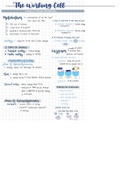
The Working Cell Notes
This chapter addresses how working cells use membranes, energy, and enzymes
- Book
- Class notes
- • 3 pages •
This chapter addresses how working cells use membranes, energy, and enzymes

Cytology Lecture Notes BIO1
Cytology is the exam of a single cell type, as often found in fluid specimens. It's mainly used to diagnose or screen for cancer. It's also used to screen for fetal abnormalities, for pap smears, to diagnose infectious organisms, and in other screening and diagnostic areas
- Book
- Class notes
- • 5 pages •
Cytology is the exam of a single cell type, as often found in fluid specimens. It's mainly used to diagnose or screen for cancer. It's also used to screen for fetal abnormalities, for pap smears, to diagnose infectious organisms, and in other screening and diagnostic areas
